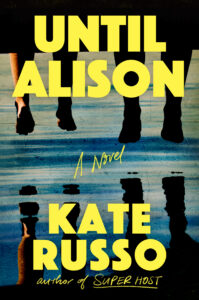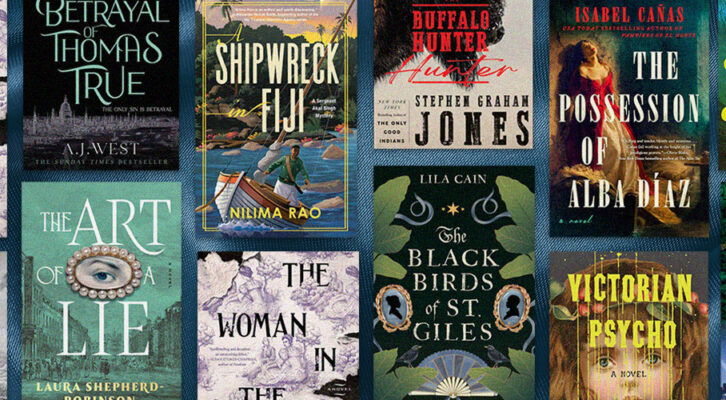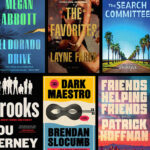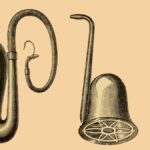There were four of us sitting in Lisa’s car in the Hannaford parking lot at 3:30 in the morning, late September, 2003. Lisa was driving and I was in the passenger seat, Cara and Mandy in the back. We’d only been in our new editorial positions on The Colby Echo for a few weeks. It was the first in my four years at Colby that the top of the Echo’s masthead was all female. None of us had spent any time in Lewiston-Auburn before and we were lost. Not one of us wanted to get out of the car. Men kidnapped and murdered women in empty parking lots. This we now knew for certain.
Despite being the News Editor of the college paper, I found out about Amy the way most people did, by someone running into my room and shouting that the police had found a body at a nearby stream. We all have inflection points in our lives and this is one of mine. There was the before I found out about Amy and after.
Amy wasn’t her name. In fact, I’ve changed everyone’s name. I want to protect Amy’s family’s privacy, but also her story has never felt like mine to tell – I’d never once spoken to her. Truthfully, no one’s story feels like mine to tell. Not even my own, sometimes. This is both the problem and the point of this essay. In 2003, it was my job to deliver the facts of what happened to Amy. Today, the facts feel like the least important part of the story.
That very early September morning, we were in Lewiston-Auburn looking for Brian Harper’s printing press. Amy’s body was found on the day we laid out our paper. The whole issue had to be rearranged to make space for such catastrophic news. Brian had given us an extension on our printing deadline, so long as we were able to collect the paper and collate the pages ourselves. It took all night to fill the blank pages with what little we knew. The who did this? and why? were the only things that anyone cared about and those were the things we still didn’t know.
On the forty-five minute-drive to what Mainer’s cheekily refer to as L.A., Cara asked us who we thought could have killed Amy: one of our male classmates or professors? Or was he local? (The gender of the killer was never in question.) Why would any man want to kill such a kind and studious young woman? Cara wasn’t asking as a journalist, just a scared young woman.
Because he could, of course. Because she was there. It was as simple and horrifying as that. But we didn’t know that yet.
It hadn’t occurred to me then, at least not yet, what the long view of this discussion really meant. In the car, we were discussing imminent danger but what we weren’t asking was how this would affect our futures. I think we all felt satisfied, based on no evidence whatsoever, that we would not fall victim to Amy’s killer. But how would this affect us later in life? I, for example, hadn’t foreseen that going for morning walks alone would become an issue for me. And I hadn’t foreseen what would happen around 2019, when, looking at a map, I stumbled upon the stream where Amy was found. Before I knew it, I was crying uncontrollably, harder than I ever cried in 2003. What followed was a year of telling myself I wasn’t going to write the book I’ve just written.
I’m not sure I wanted to know the who and the why. I wasn’t sure how much the details mattered, really. I’d never feel safe again, even with answers, and the explanation wouldn’t bring Amy back. Hardly, the mindset for an aspiring journalist.
This tragedy only deepened my confusion around my role as a student journalist. What exactly was my reporting for? I was used to writing articles about dining hall waste and student government meetings. Most weeks, I met with the dean of students and pushed, unsuccessfully, for her to give me details of the thefts and fights listed on the campus security log. So, what was I doing writing about Amy? Proving something to myself?
Lisa’s car didn’t have Satnav in 2003. She had a cellphone, but there was no reception in central Maine. We’d printed out Brain’s directions where he’d mentioned the Hannaford and after driving around in circles, we’d anchored ourselves there. Maybe, we thought, if we sit in the parking lot long enough, he’d find us.
We could just leave. I must have had that thought. Would anyone notice if your paper wasn’t in its usual place on Thursday morning? If our classmates wanted news about Amy, they’d go online.
It was Mandy who got out of the car first. Of the four of us, she was the bravest. Strange that the she was the layout editor. Cara, Lisa and I – editor-in-chief, managing editor and news editor respectively – were all conflict averse. “BRIAN HARPER!” She yelled at the top of her lungs. There wasn’t a soul around. If Brain Harper was near, maybe he would hear her?
It made perfect sense to the rest of us, so we got out and joined her. “BRIAN HARPER!!!,” we all yelled until our voices cracked and, bizarrely, we were all laughing hysterically. The ludicrousness of it all was finally clear to us. We weren’t really there to collect that paper, were we? Well, I shouldn’t speak for the other three, but I wasn’t there for the paper. I was there because it could have been me, it could have been anyone one of us in that car, but it wasn’t. So, we kept yelling, because Amy couldn’t.
Brian didn’t hear us. Of course, he didn’t. We found him at some point, I don’t remember how. Lisa probably found cell reception once we’d given up shouting. When we finally got to him, we asked if he could hear us calling his name. He thought we were joking.
We drove back with the trunk of Lisa’s car filled with stacks of newsprint I no longer believed anyone would read. I think we even stopped at Dunkin’ Donuts on the way back. I have a memory of warm donuts on my lap as we rolled into campus. I felt safe when the library and its bell tower came into view. I was relieved to be home. Then I remembered: this had been home for Amy, too.
It was only a matter of days before we learned the name of her killer. A name I won’t type. He was an older man with no relation to the college and no strong connection to Waterville. At a press conference we learned he was just there, idling in his car in a Colby student parking lot, waiting for any young woman to cross his path. A few days after, I found myself at the police station, obtaining the autopsy report. Most of what it said, my brain has mercifully forgotten. The bits I do remember, I no longer trust. Even then, I don’t think we printed most of it. Not one of us could think of what the benefit would be. So, I wasn’t going to be a journalist. That much was clear.
I’ve always felt the truth is what’s left over when the details have been forgotten. Most of what I remember would never have been printed in a newspaper article: the fear and sadness, but also equally, the numbness. Details can provide comfort and, for some, morbid fascination, but the truth is far more raw: it’s what we believe, what we feel. It’s the why not the how. When I finally started writing again in my late twenties, it was because I wanted to explore the why. Facts make lousy fiction.
Many who were there in 2003 might read this essay and tell me that I’ve gotten wrong the few details I have provided. If anything, this essay is about the simultaneous presence of truth and absence of facts. Maybe you thought I’d give you the grisly details, but the truth is, this is a story I’ve never wanted to tell. Not then and not now.
***

















